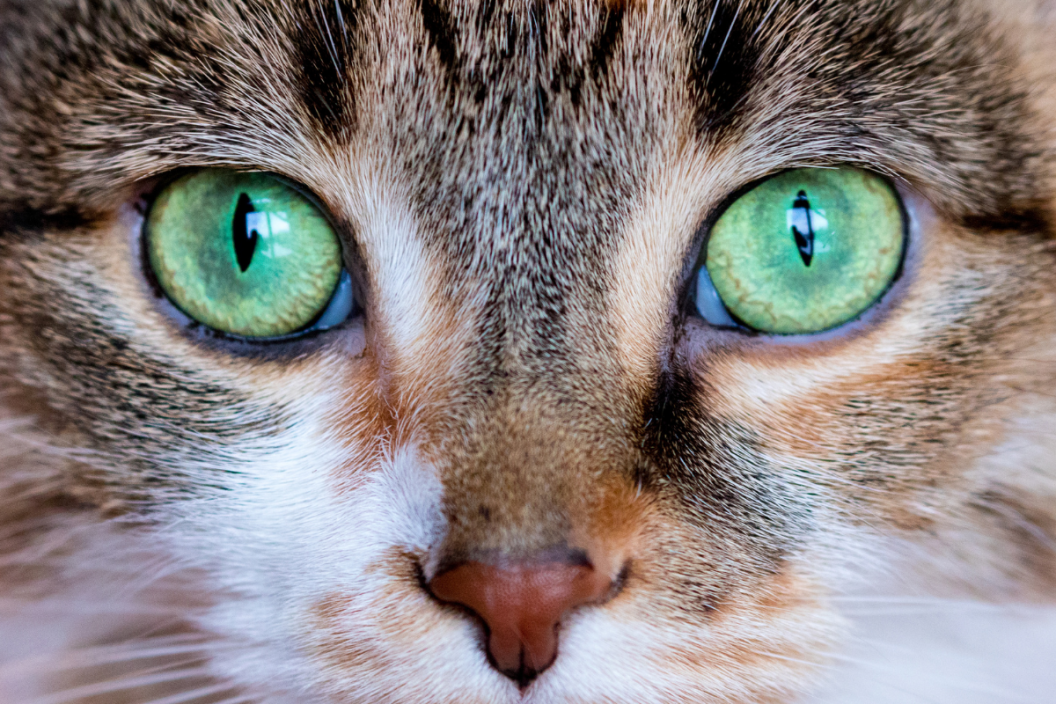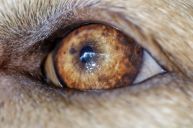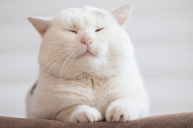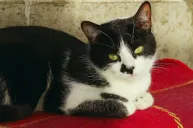What's your favorite cat's eye color?
There are many different kinds of cat eye colors. The color of a cat's eyes is determined by the amount of melanin handed down through their DNA from their mother and father cats. The more melanin your cat acquires, the darker their fur will be; however, this does not relate to the color of their eyes because melanin affects them differently. The color of a cat's eyes, like the color of its coat, is hereditary.
Certain breeds will only be seen with one color of eyes. Domestic cats, more than many other domestic species, including dogs, may have a wide range of eye hues. While certain eye hues are associated with specific breeds, others are seen in a wide range of purebred and mixed breed cats. Siamese cats are perhaps the most remarkable example of a breed with eye color corresponding to coat color. Typically, purebred cats have more striking eye colors and often have some of the rarest colors.
How Do Cat's Eyes Get Their Color?
Cat eye color is influenced by two primary factors: iris pigmentation and blue refraction. The iris is divided into two layers, each of which contains pigment-producing cells (melanocytes). The size, spacing, and density of the fibers in the stroma influence how light is reflected and refracted, resulting in the shade of blue. The translucent structures in cats' eyes, like glass, are transparent blue, ranging from nearly colorless to darker blues to violet-hued blues.
The old wives' story that feeding a cat fish causes its eyes to change color is false. Kitten's eyes are always blue eyes, but the adult color develops at 6-7 weeks. There is additional pigmentation on the interior of the eye and a highly reflective region behind the retina known as the Tapetum Lucidum. This is an iridescent tissue layer that reflects light into the eye. It aids cats' vision in low-light situations, but it also creates eyeshine in flash photography.
1. Yellow Eyes/Amber Eyes/Brown Eyes
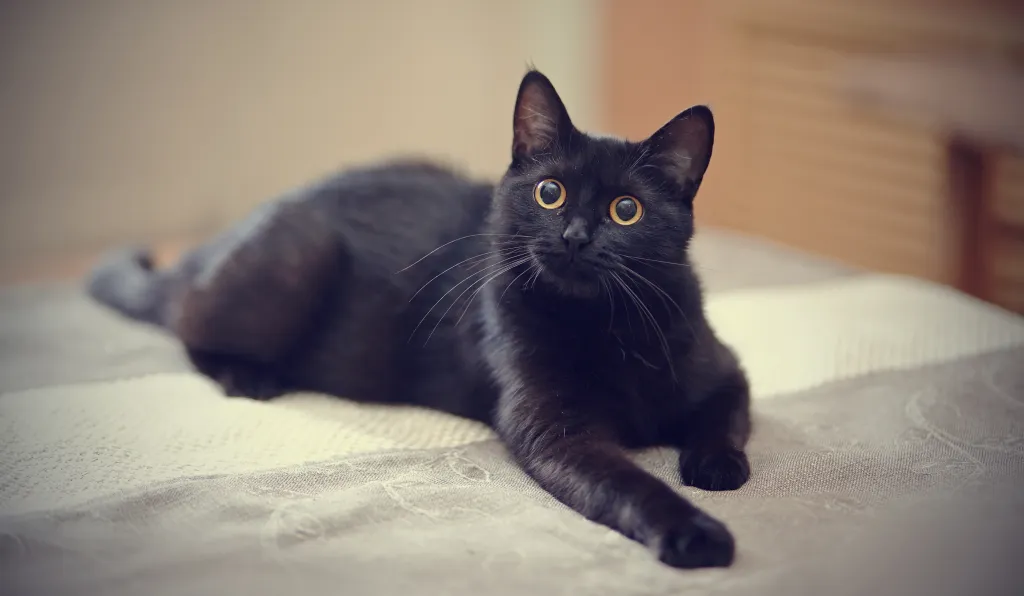
Yellow eyes can range from delicate lemon yellow to golden tones, eventually blending into a deep and rich amber. Bengal, American Shorthair, Manx, British Shorthairs, LaPerm, Bombay, Sphynx, and Norwegian Forest Cat are examples of breeds with yellow or amber eyes. The golden eyes of the Burmese cat breed may be particularly stunning, with show cats frequently displaying outstanding brightness and depth. There is some overlap between yellows and browns (light hazel or tan) and yellows and greens. Brown encompasses various colors; some browns have a green, orange, or yellow tinge to them or are flecked with them.
2. Hazel Eyes
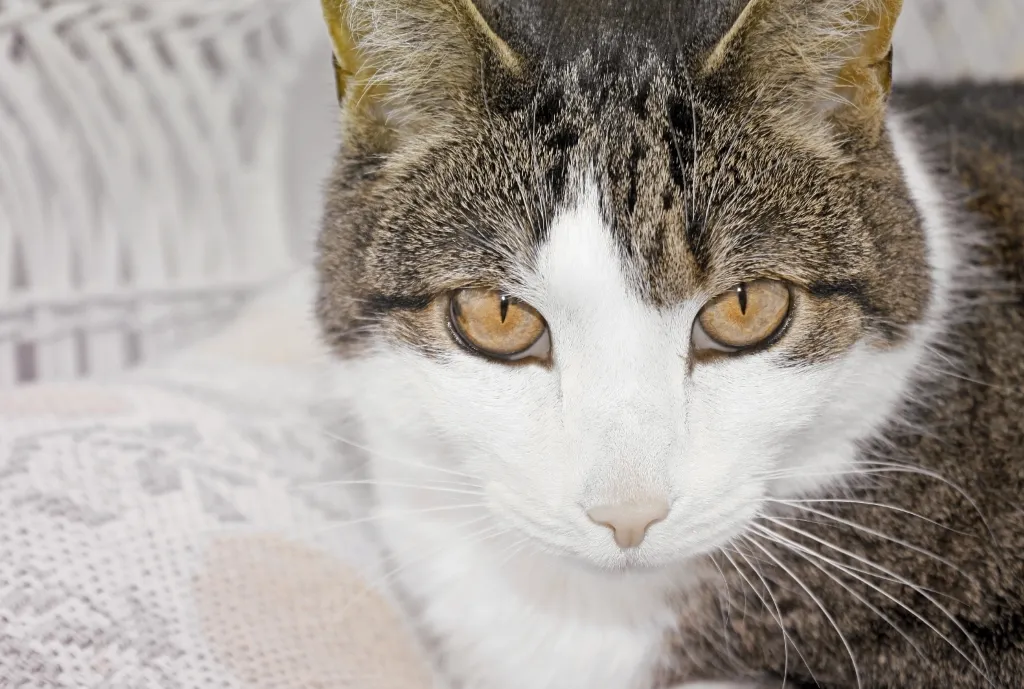
Hazel eyes are a green-golden yellow mix. Most wild cats in temperate climates, including Lynx and Bobcats, have this eye color. It's also a popular eye color among wild cats. The Abyssinian, Bengal, Singapura, Cornish Rex, and Scottish Fold are among the breeds with hazel eyes.
3. Green Eyes
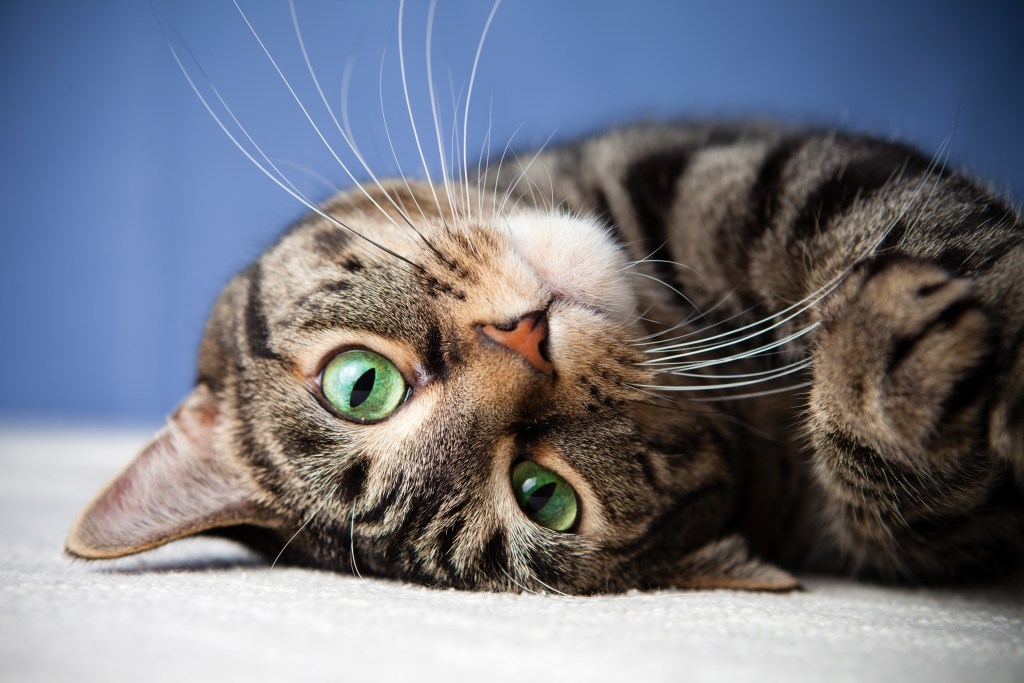
A cat's eyes can range in color from yellowish-green to gooseberry-green to darker greens to blue-toned greens. Green eyes may be found in breeds like the Egyptian Mau, which has a brilliant gooseberry color with green eyes. They are also seen in Russian Blue cats. It's also possible to notice gold or yellow specks within the iris of a green-eyed cat.
4. Aqua and Blue Eyes
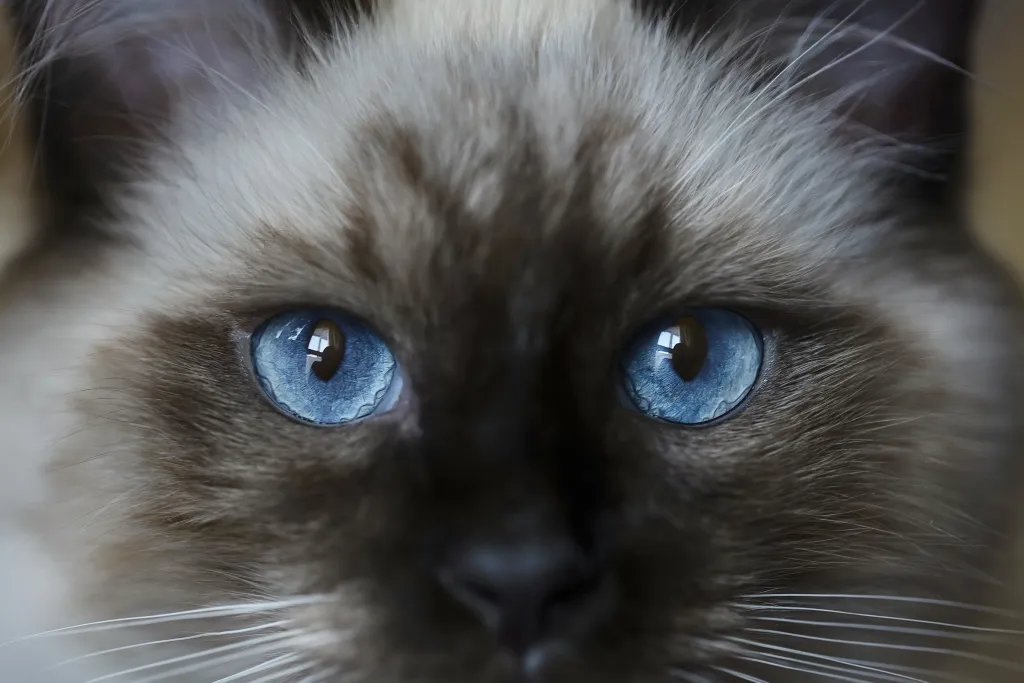
Blue eyes can range from a light sky blue to a deep and dazzling sapphire. This is because cats with blue eyes do not have melanin in their irises. As a result, the blue cat's eyes are clear, but the blue hue is caused by light reflecting off the curved edges of the iris. The dominant white gene, also known as the epistatic white gene, is to blame for this. This gene silences all other genes that code for color, resulting in a totally white coat.
5. Orange Eyes and Copper Eyes

Initially, British cat breeders desired an eye color to stand out in striking relief against any coat color. Many of the early cat fanciers in the United Kingdom requested orange eyes since pale greens and yellows were unusual. Copper eyes may be found in the Japanese Bobtail, Maine Coon, Persian, Cornish Rex, and Chartreux. Copper is the darkest eye color you'll find in cats, and it's a more unusual hue than some others.
6. Albinism: Blue Eyes, Pink Eyes, Lilac Eyes
Albino cats have either blue, pink, or lilac eyes. Because of the anatomy of a cat's eye, an unpigmented eye appears lilac rather than pink. Pink eyes are hardly common in cats. Instead, it is present in pink-eyed albinos and is caused by a total absence of pigment in the eye and very little blue refraction. Blue dilution is the form of dilution observed in cats, which converts black into grey.
7. Odd-Eyes
Odd-colored eyes can be inherited, congenital (a genetic "mistake" during the embryonic development of the cat), or the result of an accident or injury. The medical name for strange eyes is heterochromia iridium (different colored irides). It can be hereditary, congenital, or acquired (illness, injury, medication). One eye is usually blue, while the other is green, hazel, yellow, or orange.
8. Dichromatic Eyes
Dichroic eyes feature two iris colors in one. This is due to the cat's irises having varying amounts of melanin in various regions. Sometimes the eyes have a clear oval of one color around the pupil that fades into another hue. Sometimes the colors are divided into parts, such that a quarter or half of the eye is one color and the remaining section is a different color.
Share your cat eye pictures on the Wide Open Pets Facebook page!
